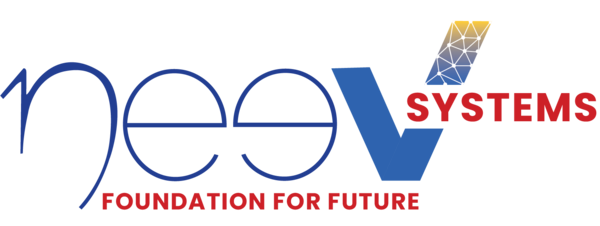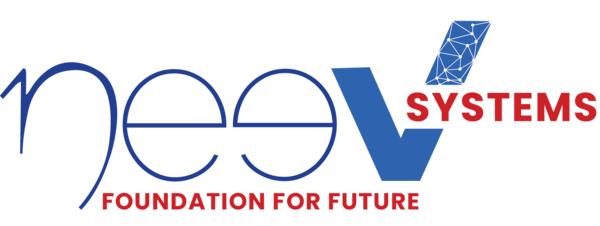In the ever-evolving landscape of technology, businesses are constantly seeking the most efficient and cost-effective solutions to meet their IT needs. Traditionally, companies have grappled with the decision between keeping their IT services in-house or outsourcing them to third-party providers. However, in recent years, a hybrid model has emerged – Virtual Captive Centers (VCC) – offering a compelling blend of both in-house IT solutions and outsourced flexibility. This model is increasingly appealing to companies looking for bespoke IT solutions without compromising on quality or security. In this blog, we delve into how VCCs operationalize this blend, illustrated with case studies that highlight specific challenges and solutions.
Understanding Virtual Captive Centers (VCCs)
Virtual Captive Centers, often referred to as Extended Captive Centers, are offshore or nearshore subsidiaries of a parent company, functioning as an extension of the parent’s operations. Unlike traditional outsourcing models, where a third-party vendor handles all aspects of the project, VCCs allow organizations to retain operational control over crucial aspects while leveraging the benefits of outsourcing.
Often confused with Global Captive Centers (GCC), VCCs are different and are highly agile. VCC model perfectly aligns with an organization’s culture and goals to extend the following benefits:
- Less Captive Investment
- Transparent Cost Structure
- Faster adaptation to market trends
- Faster Time to Market
- Greater Operational Control
- Access to specialized expertise and new-age technologies

Harness the Power of Virtual Captive Centers
Strategic Implementation of VCC
Implementing a VCC involves several key steps:
1. Strategic Planning and Partner Selection
Challenge: Identifying the right partner who aligns with the company’s operational goals and culture.
Solution: This step involves meticulous planning and careful selection of the VCC partner. Companies should:
- Assess Needs: Clearly define what functions or projects will be handled by the VCC.
- Research Partners: Look for potential partners with expertise in the relevant domain and a proven track record in managing VCCs.
- Cultural Fit: Ensure the partner’s work culture and values align with the parent company to facilitate smooth collaboration.
- Due Diligence: Conduct thorough background checks, including financial stability, references from existing clients, and case studies of past projects.
2. Governance Framework
Challenge: Maintaining control and oversight while operating remotely.
Solution: Establishing a robust governance framework is crucial for effective VCC management. This includes:
- Defining KPIs: Set clear performance metrics to measure success.
- Regular Reporting: Implement regular reporting mechanisms to track progress and address issues promptly.
- Escalation Matrix: Define a clear escalation path for resolving conflicts or addressing critical issues.
- Regular Reviews: Schedule periodic reviews and audits to ensure compliance and performance standards are met.
3. Integration with In-House Teams
Challenge: Seamless integration with existing in-house teams to ensure continuity and collaboration.
Solution: Effective integration requires robust communication and collaboration strategies:
- Collaboration Tools: Utilize advanced communication tools (e.g., Slack, Microsoft Teams) to facilitate real-time interaction.
- Clear Communication Channels: Establish clear lines of communication for regular updates and feedback.
- Cross-Training Sessions: Conduct regular training sessions to ensure both in-house and VCC teams are aligned in terms of processes and objectives.
- Team Building Activities: Foster team spirit through virtual team-building exercises and social interactions.
4. Data Security and Compliance
Challenge: Ensuring data security and compliance with international regulations.
Solution: Implementing stringent security and compliance measures is essential:
- Access Controls: Set up strict access controls to protect sensitive data.
- Data Encryption: Use advanced encryption techniques to safeguard data.
- Regular Audits: Conduct regular security audits and compliance checks to ensure adherence to regulations.
- Training Programs: Provide continuous training to VCC staff on data security and compliance requirements.
By understanding and implementing these steps effectively, companies can harness various benefits of VCCs, achieving a balance of control, cost-efficiency, and operational excellence.
Actionable Steps Neev Systems Take Help You Transition To VCC Successfully
Step 1: Define Your Needs
Neev Systems works closely with you to understand your specific IT requirements, goals, and budget. This initial step is essential to ensure we tailor our services to meet your unique needs and help you achieve desired outcomes.
Step 2: Build Your Team
Our experts will recruit and manage a dedicated team of experts tailored to your specific needs. This team will function as an extension of your in-house team.
Step 3: Seamless Collaboration
The recruited team will collaborate with your in-house team and leverage Neev Systems’ secured technology infrastructure and established processes. This will foster smooth daily operations and communication.
Step 4: Continuous Improvement
Our experts will monitor your VCC’s performance, provide regular feedback, and adapt the team and processes to align with your evolving business needs.
Step 5: Transfer
Once the VCC is operational, you can transfer the employees and infrastructure to your own subsidiary if desired.
Case study: Setting Up VCC To Enhance Operational Efficiency For Commercial Real Estate Furnishing Provider
Established in 2018, Inhabitr is an innovator in commercial real estate furnishing. Leveraging AI-driven technology, Inhabitr offers its clientele end-to-end solutions, from design to financing. With a global network comprising over 1,000 partners, Inhabitr emphasizes quality and sustainability in its furnishing offerings.
Business Needs:
Inhabitr aimed to elevate its operational efficiency while simultaneously reducing overhead costs, all without compromising the quality of its innovative furnishing solutions.
Solution:
Neev Systems introduced a Virtual Captive Centre (VCC) in Hyderabad, focusing specifically on application development to streamline Inhabitr’s processes and systems.
We Initially started with 4 highly skilled tech resources and scaled to 10 resources within a span of 6 months. Ultimately, after 12 months, the resources were transferred, having successfully achieved the outlined objectives.
Key Benefits:
- Transparent and Predictable Costs: Through the VCC model, Inhabitr gained clarity and control over its operational expenditure, ensuring predictability in financial planning.
- Cost Savings by 50%: The implementation of the VCC resulted in substantial cost savings for Inhabitr, contributing directly to improved profitability and sustainability.
- Seamless Integration with Existing Processes & Systems: Neev Systems facilitated seamless integration of the VCC with Inhabitr’s pre-existing processes and systems. This ensured continuity and minimized disruptions during the transition phase.
- Operational Time Zone Support: With the VCC strategically located in Hyderabad, Inhabitr benefited from round-the-clock operational support, aligning with the needs of its global clientele.
- Scalability of Resources with Varied Skillsets: The VCC model allowed Inhabitr to scale its technical resources efficiently, adapting to fluctuating project demands and accessing diverse skill sets as needed.
By partnering with Neev Systems to establish a Virtual Captive Centre, Inhabitr successfully optimized its operational efficiency, achieved significant cost savings, and bolstered its competitive edge in the commercial real estate furnishing market.
Conclusion
Virtual Captive Centers represent a paradigm shift in the way businesses approach IT outsourcing. By blending the control and flexibility of in-house operations with the cost efficiency and scalability of outsourcing, VCCs offer a compelling alternative for organizations looking to optimize their IT functions. As businesses continue to navigate the complexities of the digital age, VCCs emerge as a strategic imperative for driving growth, innovation, and competitiveness in a rapidly evolving marketplace. However, successful implementation requires careful planning, strategic alignment, and effective management to leverage the full potential of this innovative model.
How Neev Systems Can Help?
At Neev Systems, we understand that every business has diverse IT requirements. Therefore, we don’t follow a set standardized approach. Rather, we customize our solutions to meet unique business needs. Our experts have the requisite operational knowledge and technical expertise to help you successfully establish your VCC.
With our VCC model, you can achieve significant benefits:
- You can reduce your IT Budget by up to 50% compared to onshore operations and up to 25% from traditional outsourcing.
- Get diverse talent access for VCC.
- Work with dedicated teams and your own managers for effective communication.
- Scale your team up or down as your business needs evolve.
To know more about our VCC model, get in touch with our experts today!

Unlock Cost Savings with VCCs

Sitaram Pothula
With 22+ years of IT experience, Sitaram combines technical expertise with strategic leadership. He has led engineering teams and delivered solutions across BFSI, telecom, and healthcare. Sitaram excels in aligning technology with business goals to drive innovation and efficiency.


